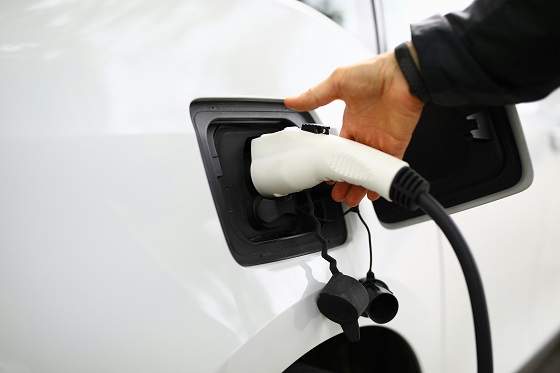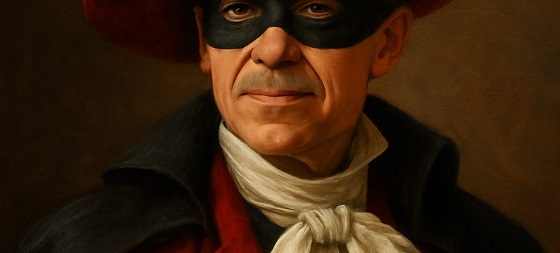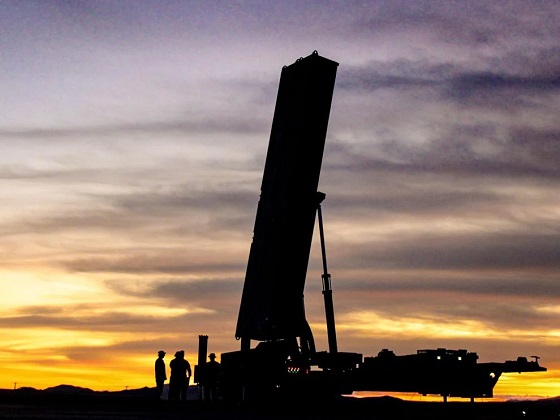International
Prime Minister Trudeau heads to NATO summit, where leaders face critical decisions

Prime Minister Justin Trudeau departs Ottawa on Sunday, June 25, 2023, en route to Iceland. Trudeau is heading to the NATO leaders’ summit in Lithuania this week, where Canada is likely to play a larger-than-usual role in two critical discussions: the alliance’s expanding membership and its efforts to refocus on collective defence. THE CANADIAN PRESS/Sean Kilpatrick
By Sarah Ritchie in Ottawa
Prime Minister Justin Trudeau is heading to the NATO leaders’ summit in Lithuania this week, where Canada is likely to play a larger-than-usual role in two critical discussions: the alliance’s expanding membership and its efforts to refocus on collective defence.
Trudeau is expected to depart for Riga, Latvia, from Ottawa on Sunday evening. He is due to meet with that country’s leaders on Monday before heading to the Lithuanian capital for the first day of the NATO summit on Tuesday.
At last year’s summit in Madrid, NATO leaders identified Russia as “the most significant and direct threat to allies’ security and to peace and stability in the Euro-Atlantic area” in a strategic concept document that set out their intent to strengthen deterrence and defence in the region.
That came after a meeting in Brussels in March 2022, when leaders agreed to deploy four new multinational battle groups on the eastern flank in Bulgaria, Hungary, Romania and Slovakia, adding to those in Estonia, Latvia, Lithuania and Poland.
The alliance has drafted a new defence plan that leaders will be asked to approve in Vilnius, one that is being described as a return to its Cold War stance.
“What we’re seeing now is really a return to NATO’s core business,” said Tim Sayle, a NATO historian and professor at the University of Toronto.
He said this likely also means a return to more challenging negotiations among members as they decide on defence policy and procurement, at the same time as they are debating whether to allow Sweden and Ukraine to join. And on both topics, he said, allies will be looking to Canada.
“Rarely are there summits where Canada would be a focus of any elements, but I do think (it) is here,” Sayle said.
“Canada has a decision to make about its role in the discussion about Ukraine, but it also has this decision to make about Canadian defence spending and just what kind of ally Canada is going to be.”
Adm. Rob Bauer, the chair of NATO’s military committee, told media at a July 3 briefing that the new defence plan is split into three parts: the southeast region including the Mediterranean and the Black Sea, the central region from the Baltics to the Alps and the High North and Atlantic region.
Once the plans are approved, the real work begins. “Then we have to go and do our work to reach the higher number of forces with a higher readiness, we need to exercise against the plans, we need to buy the capabilities that we require,” Bauer said.
That will require more money. Only about a third of NATO members are meeting the agreed-upon target of spending two per cent of their GDP on defence — which includes a pledge to dedicate one-fifth of that funding to equipment.
Bauer said he expects two per cent will be the spending floor, instead of the target, by the time the summit is over.
“There is perhaps a stronger link than ever before between the new defence plans, the new defence investment pledge and the NATO defence planning process,” NATO spokesperson Oana Lungescu said at the July 3 briefing.
For the countries that are lagging behind, there will be increasing pressure to step up.
Canada spends about 1.3 per cent of its GDP on defence and has no public plan to get to the current target. Defence Minister Anita Anand has insisted that Canada’s contributions to the defence of Ukraine and its leadership in heading up a NATO battle group in Latvia are more important.
Before attending the NATO summit, Trudeau is set to participate in meetings Monday with Latvia’s president, Edgars Rinkēvičs, and its prime minister, Krišjānis Kariņš.
Trudeau is also expected to meet Canadian Armed Forces members who are part of the country’s largest overseas mission.
But even in Latvia, Canada seems to be lagging behind. It’s been more than a year since Anand pledged to expand the battle group to a combat-ready brigade, and detailed plans are still being negotiated. Battle groups typically have close to 1,000 troops, while military members in a brigade number about 3,000.
Canada has committed to sending a tank squadron with 15 Leopard 2 tanks and some 130 personnel to Latvia starting this fall, but it is unclear how many more troops will join the 800 Canadians already in place.
Other countries have gone further. Germany has pledged to station a 4,000-soldier brigade in Lithuania. The United Kingdom, which is leading a battle group in Estonia, and the United States, which leads another in Poland, tested their ability to quickly scale up to a brigade earlier this spring.
Leaders in Vilnius are also likely to focus on the status of Sweden and Ukraine, each of which has asked to join NATO.
Last-minute talks aimed at getting Turkiye and Hungary on side with allowing Sweden to become a member have not been successful. Its Nordic neighbour Finland joined most recently, in April.
If Sweden’s membership is approved, Bauer said it won’t take long to adapt the defence plans.
“Sweden is at the table in the military committee, in the North Atlantic Council every week. So they know basically everything already,” he said.
More contentious than that is the issue of when to admit Ukraine.
Some nations are pushing for immediate membership. U.K. Defence Secretary Ben Wallace said last month that he hopes to see an expedited process.
Meanwhile, Trudeau has repeatedly stated that Canada supports Ukraine’s membership “when the conditions are right,” without defining what those conditions are.
Sayle said it’s likely that other countries will expect a clearer response this time given the magnitude of the decision: whether to admit a nation that is in the midst of an active invasion to an alliance focused on collective defence.
“I think that what NATO says about Ukrainian membership will impact both the Ukrainian and Russian strategic calculations in this war, and any peace that might follow,” Sayle said.
This report by The Canadian Press was first published July 9, 2023.
Automotive
Major automakers push congress to block California’s 2035 EV mandate

 MxM News
MxM News
Quick Hit:
Major automakers are urging Congress to intervene and halt California’s aggressive plan to eliminate gasoline-only vehicles by 2035. With the Biden-era EPA waiver empowering California and 11 other states to enforce the rule, automakers warn of immediate impacts on vehicle availability and consumer choice. The U.S. House is preparing for a critical vote to determine if California’s sweeping environmental mandates will stand.
Key Details:
-
Automakers argue California’s rules will raise prices and limit consumer choices, especially amid high tariffs on auto imports.
-
The House is set to vote this week on repealing the EPA waiver that greenlit California’s mandate.
-
California’s regulations would require 35% of 2026 model year vehicles to be zero-emission, a figure manufacturers say is unrealistic.
Diving Deeper:
The Alliance for Automotive Innovation, representing industry giants such as General Motors, Toyota, Volkswagen, and Hyundai, issued a letter Monday warning Congress about the looming consequences of California’s radical environmental regulations. The automakers stressed that unless Congress acts swiftly, vehicle shipments across the country could be disrupted within months, forcing car companies to artificially limit sales of traditional vehicles to meet electric vehicle quotas.
California’s Air Resources Board rules have already spread to 11 other states—including New York, Massachusetts, and Oregon—together representing roughly 40% of the entire U.S. auto market. Despite repeated concerns from manufacturers, California officials have doubled down, insisting that their measures are essential for meeting lofty greenhouse gas reduction targets and combating smog. However, even some states like Maryland have recognized the impracticality of California’s timeline, opting to delay compliance.
A major legal hurdle complicates the path forward. The Government Accountability Office ruled in March that the EPA waiver issued under former President Joe Biden cannot be revoked under the Congressional Review Act, which requires only a simple Senate majority. This creates uncertainty over whether Congress can truly roll back California’s authority without more complex legislative action.
The House is also gearing up to tackle other elements of California’s environmental regime, including blocking the state from imposing stricter pollution standards on commercial trucks and halting its low-nitrogen oxide emissions regulations for heavy-duty vehicles. These moves reflect growing concerns that California’s progressive regulatory overreach is threatening national commerce and consumer choice.
Under California’s current rules, the state demands that 35% of light-duty vehicles for the 2026 model year be zero-emission, scaling up rapidly to 68% by 2030. Industry experts widely agree that these targets are disconnected from reality, given the current slow pace of electric vehicle adoption among the broader American public, particularly in rural and lower-income areas.
California first unveiled its plan in 2020, aiming to make at least 80% of new cars electric and the remainder plug-in hybrids by 2035. Now, under President Donald Trump’s leadership, the U.S. Transportation Department is working to undo the aggressive fuel economy regulations imposed during former President Joe Biden’s term, offering a much-needed course correction for an auto industry burdened by regulatory overreach.
As Congress debates, the larger question remains: Will America allow one state’s left-wing environmental ideology to dictate terms for the entire country’s auto industry?
COVID-19
Former Australian state premier accused of lying about justification for COVID lockdowns

Daniel Andrews, Premier of Victoria
From LifeSiteNews
By David James
Monica Smit said she is launching a private criminal prosecution against Daniel Andrews based on ‘new evidence proving they enforced lockdowns without medical advice or evidence.’
The fiercest opponent of the former Victorian premier Daniel Andrews during the COVID crisis was activist Monica Smit. The government responded to her advocacy by arresting her for participating in anti-lockdown protests. When she refused to sign her bail conditions she was made, in effect, a political prisoner for 22 days.
Smit subsequently won a case against the Victoria Police for illegal imprisonment, setting an important precedent. But in a vicious legal maneuver, the judge ensured that Smit would be punished again. She awarded Smit $4,000 in damages which was less than the amount offered in pre-trial mediation. It meant that, despite her victory, Smit was liable for Victoria Police’s legal costs of $250,000. It was not a good day for Australian justice.
There is a chance that the tables will be reversed. Smit has announced she is launching a private criminal prosecution against Andrews and his cabinet based on “new evidence proving they enforced lockdowns without medical advice or evidence.”
The revelation that the savage lockdown policies made little sense from a health perspective is hardly a surprise. Very little of what happened made medical sense. For one thing, according to the Worldometer, about four-fifths of the people who tested positive for COVID-19 had no symptoms. Yet for the first time in medical history healthy people were treated as sick.
The culpability of the Victorian government is nevertheless progressively becoming clearer. It has emerged that the Andrews government did not seek medical advice for its curfew policies, the longest in the Western world. Andrews repeatedly lied when he said at press conferences that he was following heath advice.
David Davis, leader of the right wing opposition Liberal Party, has made public a document recording an exchange between two senior health officials. It shows that the ban on people leaving their homes after dark was implemented without any formal input from health authorities.
Davis acquired the email exchange, between Victorian chief health officer Brett Sutton and his deputy Finn Romanes, under a Freedom of Information request. It occurred two-and-a-half hours after the curfew was announced.
Romanes explained he had been off work for two days and was not aware of any “key conversations and considerations” about the curfew and had not “seen any specific written assessment of the requirement” for one.
He added: “The idea of a curfew has not arisen from public health advice in the first instance. In this way, the action of issuing a curfew is a mirror to the State of Disaster and is not occurring on public health advice but is a decision taken by Cabinet.” Sutton responded with: “Your assessment is correct as I understand it.”
The scale of the deceptions is becoming harder for most Australians to avoid if they are paying attention. The mainstream media, for example, is now running stories that the virus originated in a laboratory. Those who have memories will recall that in 2020 anyone suggesting that the virus was artificially made were accused of anti-China racism, especially the state broadcasters SBS and the ABC. Likewise, most politicians and academics dismissed the lab leak theory. To say the least, no one is holding up their hand to take responsibility for their errors.
The email exchange, compelling evidence of the malfeasance of the Andrews government, raises further questions. If Smit’s lawyers can get Andrews to respond under oath, one ought to be: “If you were lying about following medical advice, then why were you in such a hurry to impose such severe measures and attack dissenters?”
It remains a puzzle. Why did otherwise inconsequential politicians suddenly turn into dictatorial monsters with no concern for what their constituents thought?
The most likely explanation is that they were told it was a biowarfare attack and were terrified, ditching health advice and applying military protocols. The mechanism for this was documented in a speech by Queensland senator Malcolm Roberts.
If so, was an egregious error of judgement. As the Australian Bureau of Statistics showed, 2020 and 2021 had the lowest level of respiratory diseases since records have been kept. There was never a pandemic.
There needs to be an explanation to the Australian people of why they lost their liberty and basic rights. A private prosecution might achieve this. Smit writes: “Those responsible should face jail time, nothing less. The latest revelation of ‘document 34‘ is just the beginning. A public criminal trial will expose truths beyond our imagination.”
-

 2025 Federal Election1 day ago
2025 Federal Election1 day agoColumnist warns Carney Liberals will consider a home equity tax on primary residences
-

 2025 Federal Election1 day ago
2025 Federal Election1 day agoNine Dead After SUV Plows Into Vancouver Festival Crowd, Raising Election-Eve Concerns Over Public Safety
-

 2025 Federal Election1 day ago
2025 Federal Election1 day agoMark Carney: Our Number-One Alberta Separatist
-

 Opinion2 days ago
Opinion2 days agoCanadians Must Turn Out in Historic Numbers—Following Taiwan’s Example to Defeat PRC Election Interference
-

 International1 day ago
International1 day agoJeffrey Epstein accuser Virginia Giuffre reportedly dies by suicide
-

 COVID-197 hours ago
COVID-197 hours agoFormer Australian state premier accused of lying about justification for COVID lockdowns
-

 2025 Federal Election21 hours ago
2025 Federal Election21 hours agoCanada is squandering the greatest oil opportunity on Earth
-

 International17 hours ago
International17 hours agoU.S. Army names new long-range hypersonic weapon ‘Dark Eagle’






